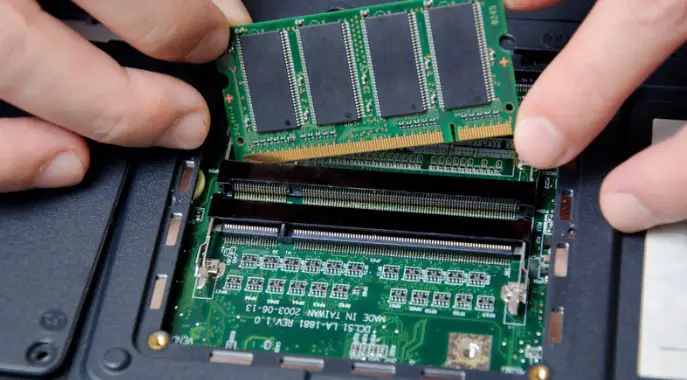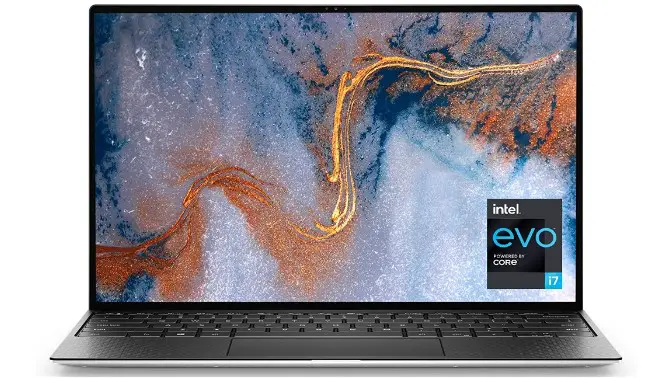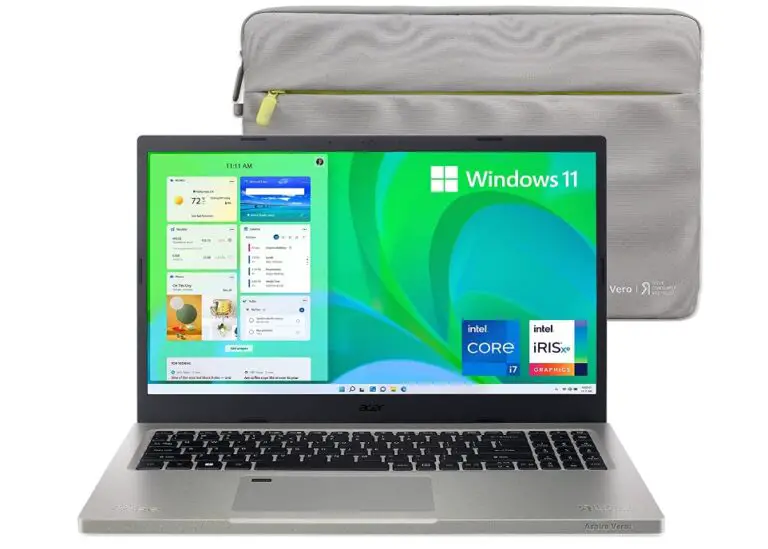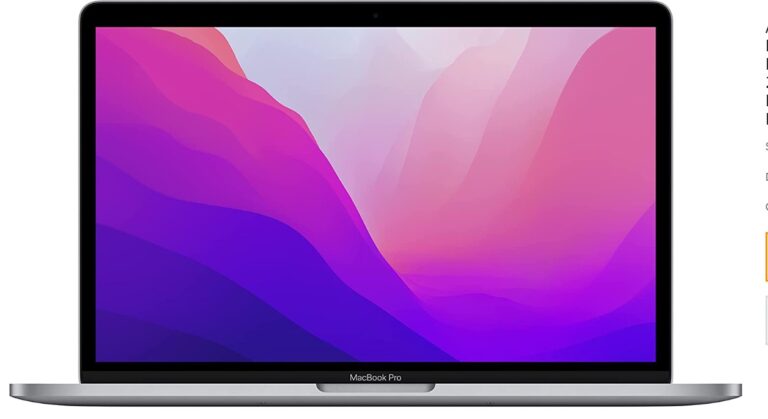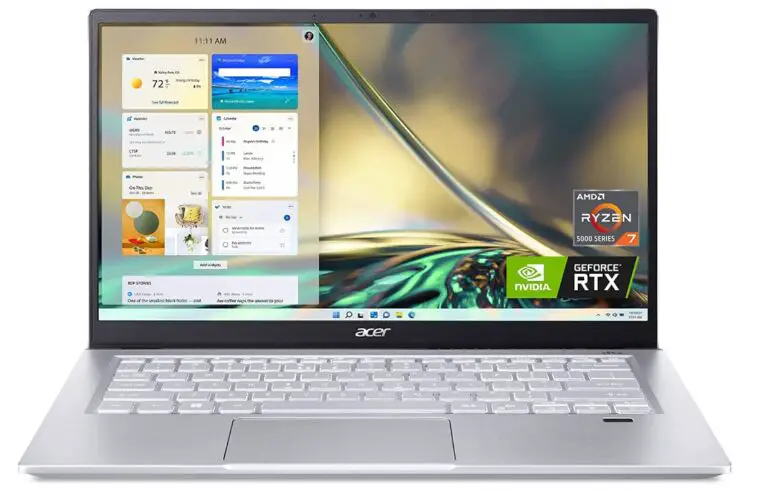Understanding External Ram For Laptops: A Comprehensive Guide
The purpose of this comprehensive guide is to provide an understanding of external RAM for laptops. It will explain how external RAM can help enhance the performance and capabilities of a laptop, as well as the different types available and their advantages and disadvantages.
This guide is designed to enable readers to make informed decisions on selecting the most suitable type of external RAM for their needs. By reading through this guide, readers will gain insight into what constitutes external RAM for laptops, its functions, benefits, and drawbacks in comparison with other forms of RAM technology.
Furthermore, readers will be able to identify which type best suits their requirements and apply it correctly within their computer system. Ultimately, this knowledge should equip readers with the necessary skillset to maximize their laptop’s potential.
Can You Use External RAM For A Computer?
No, you cannot add external RAM to a laptop. RAM sticks need to be plugged directly into the motherboard. However, for older laptops running Windows Vista or Windows 7, you can use a USB stick as “ReadyBoost” to simulate extra RAM. Adding/upgrading RAM in laptops can be tricky and depends on the specific manufacturer and model. It is crucial to check for an extra RAM slot before attempting any RAM upgrade. Furthermore, it is recommended to avoid mixing RAM sizes and manufacturers to maintain optimal performance.
Can You Buy External RAM as a Substitute?
You can buy external RAM as a substitute, but it’s not the same thing.
External RAM is the storage space that your computer uses to store data while running programs. If you have enough internal storage, then your computer won’t need external memory. However, if you’re running out of internal storage and still want to use more apps or run bigger games on your machine, then buying an external drive may be the best option for you.
ReadyBoost Feature
ReadyBoost is a feature that allows you to use an external USB drive as RAM. It’s limited, however: the maximum amount of space it can use is 4GB, and only if your computer has at least 1GB of internal memory. If you have more than one USB drive connected to your computer at a time (for example, if you have both an external hard drive and a flash drive), ReadyBoost will prioritize whichever device has the most free space on it when allocating additional power from its pool of available resources.
The benefit of this approach is that it allows users with older computers or those with limited internal storage options (like netbooks) to get some extra juice out of their systems without having to spend money on upgrading hardware components like RAM sticks or processors–and since most people already own some sort of external storage device anyway (whether it be an SD card reader or even just their smartphone), this makes sense as being something worth trying out before spending money elsewhere
Can ReadyBoost Help Older Computers?
ReadyBoost is a feature that was introduced in Windows Vista and later. It allows you to use an external USB device (like a thumb drive) as additional RAM for your computer. This can help if your laptop has low RAM, or if its internal memory is full of programs and files that are slowing it down.
ReadyBoost is available on computers running Windows 7 or newer versions of the operating system. However, it’s not always effective at improving performance–and even when it works well, ReadyBoost will only provide a small boost in speed due to limitations inherent in using USB sticks as external storage devices.
If you’re running an older version of Windows (Vista or XP), then ReadyBoost may be worth trying out since those operating systems were designed with this technology built-in from the start; however, newer versions like 8/8.1/10 generally don’t support this feature anymore because they have better ways of managing memory usage internally without needing any help from outside sources like flash drives.
Can You Add RAM To A Laptop?
The ability to add RAM to a laptop depends on the specific make and model of the device. To determine if it’s possible, you can either search for a video showcasing someone opening the same laptop, or you can open the laptop yourself to check for an additional RAM slot (though this may void the warranty).
Laptop RAM can be a complicated matter, as each laptop is designed differently. This makes it difficult to provide a general answer regarding RAM upgrades for laptops. If you’re not concerned about voiding the warranty and feel comfortable with the process, you can usually open the back of the laptop to see if any RAM slots are available.
If adding RAM is an option, exercise caution. Some laptops may not be compatible with third-party RAM. Moreover, it’s not advisable to mix RAM sizes or brands. For example, if you want to upgrade to 8 GB of RAM, it’s best to obtain two new 4 GB sticks. However, it’s important to note that there is no guarantee that the laptop will be able to handle the increased amount of RAM.
What Is Ram And How Does It Work?
RAM is something that has become a buzzword in the tech world, but what exactly does it mean? To put it simply, RAM stands for Random Access Memory and is an essential part of computing.
The primary purpose of RAM is to provide quick access to data stored on your laptop or desktop computer so applications can run faster. It speeds up processes by temporarily storing information such as instructions from programs while they are being executed.
The key specs when looking into external RAM include the type, size, speed, storage capacity and other features like ECC memory support. Each one of these components plays an important role in determining how well your devices will perform with extra RAM installed.
For instance, if you want more multitasking capabilities or better gaming performance then having higher amounts of RAM storage would be beneficial. Additionally, certain types of RAM have added advantages such as lower power consumption or improved error-correction support.
Understanding which combination works best for your needs requires research and knowledge about different types available on the market today. Ultimately, choosing the correct amount and type should depend on specific tasks you intend to do on your device as well as budget considerations.
Transitioning smoothly into the next section without saying ‘step’, understanding types of RAM can help narrow down potential choices even further.
Types Of Ram
DDR (double data rate) RAM is a type of synchronous dynamic random access memory (SDRAM) that offers higher data transfer rates compared to the traditional SDRAM.
SDRAM (synchronous dynamic random access memory) is a type of RAM that synchronizes itself with the clock speed of the processor, allowing for faster data transfer rates.
SRAM (static random access memory) is a type of RAM that does not need to be refreshed like SDRAM, making it a more reliable type of RAM, albeit more expensive.
Ddr
DDR is the acronym for Double Data Rate, which refers to a type of computer memory.
It is an abbreviation for synchronous dynamic random access memory (SDRAM).
DDR increases the speed of data transfer by doubling the rate at which data can be sent and received from the RAM module compared to SDRAM.
The main difference between DDR and its predecessor SDRAM lies in their internal architecture; with DDR having wider data paths that enables more efficient operation.
As such, they offer higher speeds than other types of RAM while maintaining low latency levels.
This makes them ideal solutions for laptops where performance is important but size may be limited.
Furthermore, when coupled with appropriately configured processors, DDR modules can provide optimal results in terms of both speed and efficiency.
Sdram
SDRAM is the predecessor to DDR and stands for Synchronous Dynamic Random Access Memory. It offers a lower cost than its counterparts, making it an ideal choice for those looking to upgrade their laptop’s RAM on a budget.
SDRAM also has better heat regulation capabilities compared to other types of RAM due to its simpler internal architecture. With appropriate cooling solutions in place, users can take advantage of this type of memory without having to worry about overheating or performance degradation.
Furthermore, SDRAM chips are available in various speeds depending on one’s needs, allowing them to find the best solution for their device with minimal upfront costs.
In summary, SDRAM provides an excellent balance between value and power that makes it suitable for most laptops regardless of price point or usage scenario.
Sram
SRAM, or Static Random Access Memory, is a type of RAM used primarily in laptop computers.
It is different from SDRAM and DDR because it does not require any refreshing to retain its contents.
SRAM utilizes less power than other types of RAM, making it an ideal choice for those looking to reduce their device’s energy consumption while still getting the most out of its memory capabilities.
Additionally, this type of RAM has superior heat management capabilities compared to other forms due to its low power requirements, allowing users to rely on it without worrying about overheating or performance degradation.
With its combination of high capacity and low power consumption, SRAM provides excellent value for laptops that need reliable external memory with minimal overhead costs.
Laptop Ram Capacity
When it comes to RAM, laptop users must consider the capacity of external memory available. This is an important factor in determining how much information can be stored on a device.
The following are some critical specs for understanding laptop RAM capacity:
- RAM Specs: Users should determine the size and type of RAM (e.g., DDR4) that is compatible with their laptops before making any purchases.
- RAM Speed: Similarly, there are different speeds associated with certain types of RAM; therefore, users need to ensure they buy one that matches their computer’s specifications.
- RAM Cost: Finally, cost is also something to take into account when buying additional RAM for a laptop as prices range from lower end models to more expensive ones depending on brand or quality.
Regardless of these factors, having sufficient memory is essential if someone wants their laptop to run smoothly and efficiently. To make sure you have enough storage space, research your model’s specific requirements so you know what kind and how much additional RAM you need to purchase.
Through this process, individuals will be able to find the perfect balance between performance and budget when expanding the memory capacity of their devices.
Now let’s move onto installing this new external memory into our systems.
Installing External Ram
The capacity of laptop RAM is a key factor in determining how powerful your machine as well as its ability to multitask. Upgrading the RAM can be a cost-effective way to increase productivity and efficiency, but before taking such an action it’s important to understand the process for installing external RAM.
The installation process typically involves opening up the back panel of the laptop and removing any existing memory modules from their slots. The next step is to identify compatible RAM for your device and purchase accordingly, with prices ranging between $50-$100 depending on brand and speed. It’s also important to take into account the associated labor costs when factoring in total installation fees.
| Component | Cost | Requirements |
|---|---|---|
| RAM Purchase | $50 -$100 | Compatible with Laptop Model |
| Installation Labor Costs | Vary by Vendor/Service Provider | Professional Installation Recommended |
Understanding compatibility is paramount in upgrading your RAM successfully; incompatibility issues can lead to data loss or system instability requiring more extensive repair work down the line. Researching product reviews, consulting user forums, and referencing manufacturer specifications are all great places to start when shopping around for new memory components that fit both your budget and technical needs. With proper preparations, you’ll soon be ready to move forward towards testing and troubleshooting ram.
Testing And Troubleshooting Ram
Testing and troubleshooting RAM is an essential part of understanding external RAM for laptops. Common issues include overclocking, latency speeds, and compatibility between RAM modules. The best way to diagnose any potential problems with your laptop’s RAM is to perform a series of diagnostic tests.
To test the performance of your RAM:
- Run benchmarking software that can check the speed and capacity of both individual memory slots as well as the overall RAM module installed in your laptop.
- Check whether or not the installed RAM complies with manufacturer guidelines by looking up its specifications online.
- Perform stress tests on each slot individually, which will reveal any issues caused by overheating or malfunctioning components within the system itself.
These tests should be performed regularly to ensure that your laptop’s RAM functions at peak performance levels and remains compatible with other hardware components in your system. By taking proactive steps such as these, you’ll be able to identify any potential problems early on before they become serious enough to require expensive repairs or replacements down the line.
With this knowledge in hand, you can now move onto finding the most compatible RAM for your laptop needs.
Compatible Ram For Your Laptop
Picking the perfect parts is paramount for power-packing a laptop with an optimal memory upgrade. Memory compatibility, RAM speed, and memory modules are all critical components to consider when choosing compatible RAM for your laptop.
When it comes to performance, pairing with powerful components leads to peak productivity potential. Knowing which ram specs match up with your hardware configuration is key to capitalizing on computing capabilities.
With the correct combination of components from motherboards to CPUs and beyond, users can maximize their machine’s multitasking abilities while minimizing latency issues due mainly to insufficient or incompatible memory speeds.
Researching what type of memory supports and fits within your system’s architecture will ensure smooth sailing towards success in putting together a balanced package that provides efficient performance without any hiccups along the way.
With these details in mind, we move onto the benefits of upgrading external RAM.
Benefits Of Upgrading External Ram
Upgrading external RAM can have a number of benefits, including increased speed, increased storage capacity, and improved multitasking.
The addition of external RAM can increase the speed of a laptop, allowing users to quickly and efficiently access programs and data.
Furthermore, adding external RAM can also increase storage capacity, allowing users to store more data on their laptop.
Finally, upgrading external RAM can improve multitasking, allowing users to run multiple applications at once without slowing down the laptop.
Increased Speed
One of the major benefits that come with upgrading external RAM for laptops is increased speed. As more memory becomes available, systems can process larger amounts of data in a shorter time span due to increased speed limits. This leads to improved system performance as applications and processes are able to run smoother and faster.
Additionally, by taking on less strain from having to constantly access hard drives for information, power consumption is reduced which helps extend battery life. The result is an overall boost in productivity and efficiency when using a laptop or other device powered by external RAM.
Increased Storage Capacity
An increase in storage capacity is another advantage of upgrading external RAM for laptops.
Depending on the specs, some laptop models can accommodate up to 16GB or even 32GB of RAM.
This allows users to store more data and run multiple tasks simultaneously without bogging down the system’s performance due to lack of memory or compatibility issues.
As a result, this helps reduce overall computer lag when loading various applications and programs that require additional resources.
Furthermore, it also provides users with greater flexibility as they are able to take full advantage of their systems’ capabilities which leads to improved user experience.
Improved Multitasking
With an increased RAM capacity, laptop users are able to perform multiple tasks at the same time with improved efficiency.
Through task scheduling and resource allocation, there is a better chance of successfully performing more demanding operations such as video editing or gaming without experiencing system lags.
This allows for multitasking capabilities that can lead to greater productivity especially when needing to juggle between different types of applications simultaneously.
In addition, it also enhances user experience as they no longer have to worry about compatibility issues or having their system slow down due to lack of memory.
Ultimately, upgrading external RAM empowers laptop users with the capability of doing more in less time.
Potential Pitfalls Of External Ram
Upgrading external RAM can be a great way to increase the processing power of your laptop and access larger files. However, there are some potential pitfalls that consumers should consider before they invest in extra memory.
Here are five key risks associated with upgrading external RAM:
- Compatibility issues may arise between different types of RAM modules;
- Memory shortages occur when system requirements exceed available RAM capacities;
- Overclocking or using incompatible frequencies results in decreased performance and reliability;
- Increased heat buildup due to increased power consumption can result in hardware damage;
- Poorly configured BIOS settings may not enable maximum speed for newly added RAM modules.
By considering these upgrade risks ahead of time, you can ensure that you get the most out of your new RAM without any compatibility issues or performance drawbacks.
To further optimize the performance of your upgraded RAM, it’s important to understand the tips and strategies for optimizing its efficiency.
Tips For Optimizing Ram Performance
According to a recent survey, nearly 60 percent of laptop users don’t understand the importance of optimizing their RAM performance.
It is essential for every laptop user to be aware of how memory optimization and heat management can help boost their system’s performance as well as extend its life span.
RAM (Random Access Memory) enables faster access to data stored on a computer than other types of storage like hard disks or WORM drives.
To improve your machine’s speed and overall responsiveness, you should always try to maximize the amount of available RAM in your system by upgrading it whenever possible.
Additionally, proper power management techniques such as reducing display brightness and disabling unnecessary processes will also enhance your machine’s performance significantly.
Choosing The Right Ram For Your Laptop
In order to optimize RAM performance, laptop users must choose the right RAM for their needs. When selecting a new RAM module, there are several important factors to consider:
- Memory speed – The memory clock speed is measured in megahertz (MHz). A higher MHz rating means faster data transfer rates and improved system responsiveness.
- Capacity – The amount of RAM installed affects how many applications can run simultaneously without lag or slowdowns. As a general rule, more RAM capacity is better.
- Latency issues – Low latency RAM provides quicker response times than standard-speed modules, which helps reduce input/output delays when loading apps or web pages.
- Price – Prices will vary depending on brand and size of the RAM module but it’s important to compare prices before making a purchase decision.
When choosing the right external ram for your laptop, make sure that you do your research first and understand what type of computer you have so that you get the best possible performance out of your hardware setup.
Consider aspects such as memory speeds, capacities, latency levels, and prices to ensure that you opt for an efficient solution according to your specific needs and budget constraints.
Additionally, don’t forget about customer reviews since they can give great insight into both product quality and customer service provided by different brands and manufacturers alike.
Factors to Consider When Buying RAM
RAM is one of the most important components in a laptop, as it dictates how quickly your computer can perform tasks. While there are many factors to consider when shopping for RAM, speed and capacity are among the most important.
Speed
RAM is a volatile memory that stores data while the computer is on. It’s a type of random access memory (RAM), which means it can be accessed randomly and quickly. There are many types of RAM available, but they all have one thing in common: speed. The faster your computer, the more important it is that you choose high-quality RAM so you can get the most out of your system’s CPU and GPU.
RAM comes in two varieties: DDR4 and DDR3L (low voltage). DDR4 has been around longer than DDR3L, but both offer great performance–it just depends on what kind of processor you have installed in your computer or laptop. If possible, we recommend using only one type throughout all components so there aren’t any compatibility issues between them later down the road when upgrading parts like CPUs or GPUs (graphics processing units).
Clock speed refers specifically to how fast each module can process data; this value ranges anywhere from 2133 MHz up through 2666 MHz depending on manufacturer specifications for each model sold today.
Latency
The latency of RAM is the amount of time it takes for information stored in memory to be accessed by other parts of your system. The lower this number is (in nanoseconds), the better.
- Access Time: The time it takes for your system to access the data in RAM.
- CAS Latency: This is the number of cycles it takes for a memory module to complete a read operation.
- RAS Latency: This is the number of cycles it takes for a memory module to complete a write operation, and it’s usually higher than CAS latency because there are more steps involved in writing data than there are with reading data (such as refreshing).
Capacity
You’ll want to consider the capacity of your RAM. The size of a computer’s RAM is measured in gigabytes (GB), and it’s important to make sure that you have enough space for your needs. For example, if you’re looking at buying a laptop with 8GB of RAM, but you also want to play games on it and listen to music while working on homework or other projects, then this might not be enough memory for all of your needs.
If you plan on using multiple applications at once or doing something else that requires more processing power than usual–like editing videos–then having more than 16GB could be beneficial as well.
Price
Price is the most obvious factor to consider when buying RAM, but it’s not the only one. The cost of a module is determined by its capacity and speed, which can be expressed as a price per gigabyte (GB) or price per MHz. A higher-capacity module with more channels will generally cost more than one with fewer channels and less overall bandwidth.
Warranty
RAM is a very delicate component and can be easily damaged if not handled correctly. Therefore, you should always buy RAM from trusted manufacturers who offer warranties on their products. The longer the warranty period, the better it is for your peace of mind. Some manufacturers offer lifetime warranties on their products while others only cover them for one year or less. In addition to this, you should also check out return policies before making any purchase because they might allow you to return your product if something goes wrong with it within a certain time frame (usually 30 days).
Compatibility
When choosing RAM, it’s crucial to ensure compatibility with your laptop. There are several factors to consider when determining compatibility:
- Operating System (OS) Compatibility: The OS of a computer determines its compatibility with certain types of RAM. Before buying new memory, make sure you know what kind of OS your laptop uses. For instance, Windows 10 and macOS have different RAM requirements and compatibility.
- Motherboard Compatibility: The motherboard in your laptop has specific RAM slots that determine the type and amount of RAM it can support. Check your laptop’s specifications or user manual to determine which RAM types are compatible with your system. Additionally, consider the maximum RAM capacity your motherboard can support to avoid purchasing more than necessary.
- Processor Compatibility: The processor or CPU in your laptop also plays a role in RAM compatibility. Some processors can support faster RAM speeds, while others may require specific types of memory. Be sure to research your laptop’s CPU specifications to ensure proper compatibility.
Cooling
The cooling system of your new RAM is another important factor to consider. While heat sinks and fans are common, more advanced cooling systems are available for those who need extra cooling capabilities:
- Liquid Cooling Systems: Some RAM modules come equipped with liquid cooling systems that feature tubes and coolant to dissipate heat more effectively than traditional air-cooling methods.
- Water Blocks: Water blocks are devices that connect directly to your CPU’s heat sink, providing additional cooling for your RAM. This advanced cooling method can help prevent overheating and maintain optimal performance, especially for those who run resource-intensive applications.
Durability
Considering the durability of your RAM is essential to ensure a long-lasting and reliable performance:
- Lifespan: RAM modules with a longer lifespan will help ensure your computer remains functional for years to come. High-quality RAM products typically have a longer life expectancy, so it’s worth investing in reputable brands.
- Reliability: As a volatile memory, RAM loses its data when the computer is turned off. To avoid data loss and maintain consistent performance, choose RAM products with high reliability ratings. Look for products with gold contacts or copper-clad aluminum heat sinks, which are more resistant to corrosion and oxidation over time. Avoid cheap brands that utilize inferior materials, as they tend to wear out much faster than higher-end manufacturers like Corsair or G.SKILL.
Performance
Performance is the most crucial factor when selecting RAM. The performance of RAM is measured through various factors:
- Benchmark Tests: Benchmark tests measure the speed at which your computer processes data and compare it to other machines with similar specs. This provides a good indication of your current RAM’s performance and can help you determine if an upgrade is necessary.
- Response Time: Response time refers to how quickly information can be accessed from memory (RAM). Faster response times result in less lag between user input and on-screen action, providing a smoother experience.
- Data Transfer Speed: Data transfer speed measures how quickly information moves between devices such as your CPU or GPU and memory (RAM). Higher data transfer speeds contribute to better overall performance and responsiveness, especially in resource-intensive applications like gaming or video editing.
Upgrading RAM on a Laptop
To upgrade the RAM on your laptop, you’ll need to make sure that the new RAM is compatible with your computer. You can find out if it is by looking at the model number of your laptop and then searching for compatible parts online.
The maximum capacity of external RAM will vary depending on what type of computer you have–laptops can hold up to 16 GB while desktops can hold up to 64 GB or more.
If you’re having trouble installing or using external memory, try restarting your machine and unplugging any unnecessary devices (like USB hubs).
Can You Connect RAM Through USB?
Connecting RAM through USB is not possible; however, Windows PCs offer a “ReadyBoost” feature for USB drives, which treats them as virtual RAM. This feature has not been relevant since the era of Windows Vista and will not enhance the performance of contemporary computers.
RAM is a highly particular hardware component that cannot function through a USB port. It demands a specialized interface and power supply that only the motherboard can provide. Moreover, one of the primary functions of RAM is its ability to be accessed and modified quickly. For this reason, it needs to be situated near the CPU, which further emphasizes the necessity of connecting it to the motherboard.
For older computers, a USB stick can be utilized for additional RAM. After plugging it in, right-click on it to view its properties and enable “ReadyBoost.” However, this method is only effective for computers running Windows Vista or Windows 7 at the latest. For more modern computers, this approach is futile and may even slightly deteriorate performance.
Is Portable RAM A Thing?
No, it is not a thing. RAM sticks must be connected to the motherboard for several reasons. RAM needs a particular interface, and the CPU must interact with it at an extremely high speed. It is not feasible to create modern RAM that is both functional and portable.
There might have been a time when portable RAM was conceivable, back when CPUs were slower and computers had fewer simultaneous processes. However, today’s CPUs necessitate the speed provided by motherboard-mounted RAM, and there is likely no way to circumvent this requirement.
Can You Combine 4GB RAM With 8GB RAM?
It is indeed possible to combine 4GB RAM with 8GB RAM without encountering any problems. This can be done whether you have a single 4GB stick and want to add an 8GB stick, or if you have two 2GB sticks and wish to add two 4GB sticks. Although it is preferable to utilize RAM of the same size for better performance, it is not an absolute necessity.
Conclusion
In conclusion, understanding external RAM for laptops can be a tricky process. However, with the right knowledge and research, it is possible to find the best RAM that fits your laptop’s needs.
It is important to consider factors such as size, speed, and compatibility when selecting RAM so that you get the most out of your purchase. Additionally, testing and troubleshooting can help ensure optimal performance.
Ultimately, upgrading to external RAM can provide many advantages if done correctly – but remember ‘look before you leap,

